 Originally published 5/15/22 on Substack.
Originally published 5/15/22 on Substack.
First, once again I’ve written a post that’s too long for gmail. Your email version is probably cut short; please click on the title to go to the site in order to read the whole thing. Second, my sincerest apologies for the lateness of this post. A number of things conspired to keep me finishing it in a reasonable amount of time, and as such I’m way behind in my schedule. Therefore, I intend to turn off payment for June. There will be no poll or Request Line choices for that month, but those features will resume in July. My intention is to have a very productive summer, and catch up on what I’ve promised, including new rpg material. Third, this is a Request Line post, another pick by Friend of the Newsletter and paid subscriber Steve Carlson. Steve and I are paid subscribers to each other’s Patreon, and we’ve become Request Buddies. Just last week, Steve reviewed my request, The Ghost of Dragstrip Hollow (1959, William J. Hole Jr.) and it’s free to read! Go there and read about this incredibly kooky delight, then subscribe! Finally, there are spoilers here, but I’ve tried to keep them to a minimum in the review half, enough that you could read it and still enjoy and be surprised by the film.
What is it? Master of the Flying Guillotine, written and directed by Jimmy Wang Yu, and starring Jimmy Wang Yu, Kam Kong, Doris Lung, Sham Chin-bo, Yu Chung-chiu and Yung-Sheng Wang as Yogi Tro Le Soung.
First viewing? Yes!
What’s it about? When blind government agent and decapitation enthusiast Fung Sheng Wu Chi (Kam Kong) discovers that his two disciples were killed by rebel Yu Tien Lung a.k.a. the One-Armed Boxer (Jimmy Wang Yu), he swears revenge, and won’t let anything, even a martial arts tournament, get in the way.
What are your thoughts about it? Part of trying to figure out how to build a 1970s-based role-playing game is going through various ’70s movements, fads, images and trends and figuring out what’s essential to describe an America for characters to play in. Blaxploitation? Most def. Disco? Hands in the air. Watergate, paranoia, and the surveillance state? I see you. Energy crisis? Fill ’er up. The “Me” Decade of dubious self-improvement? Aye!
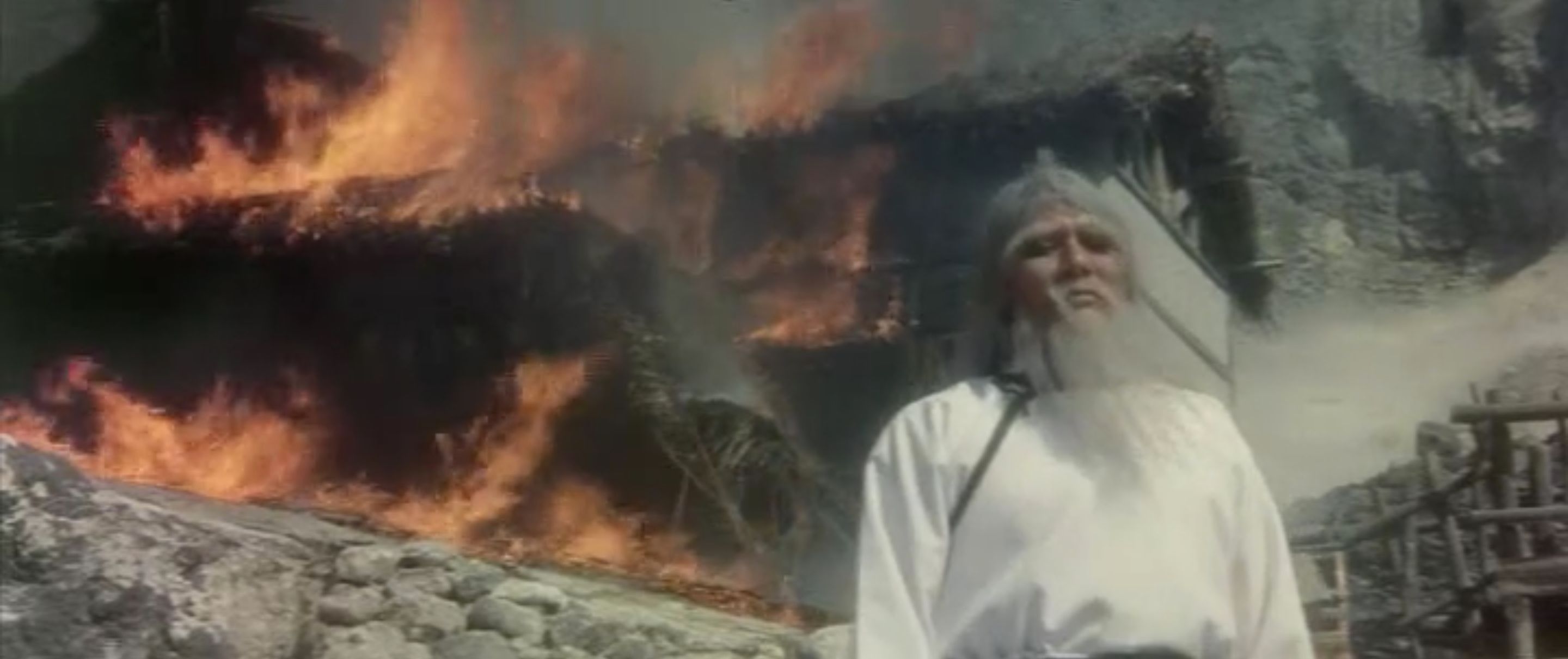 Here I go, here I go, whether friend, whether foe
Here I go, here I go, whether friend, whether foe
All of these, even if not directly specific to America, had a specific American inflection, if you will. But there was one important ’70s film genre that wasn’t American but needs to be part of the Against the ’70s conversation: the Chinese martial arts movie. Wuxia, take a bow.
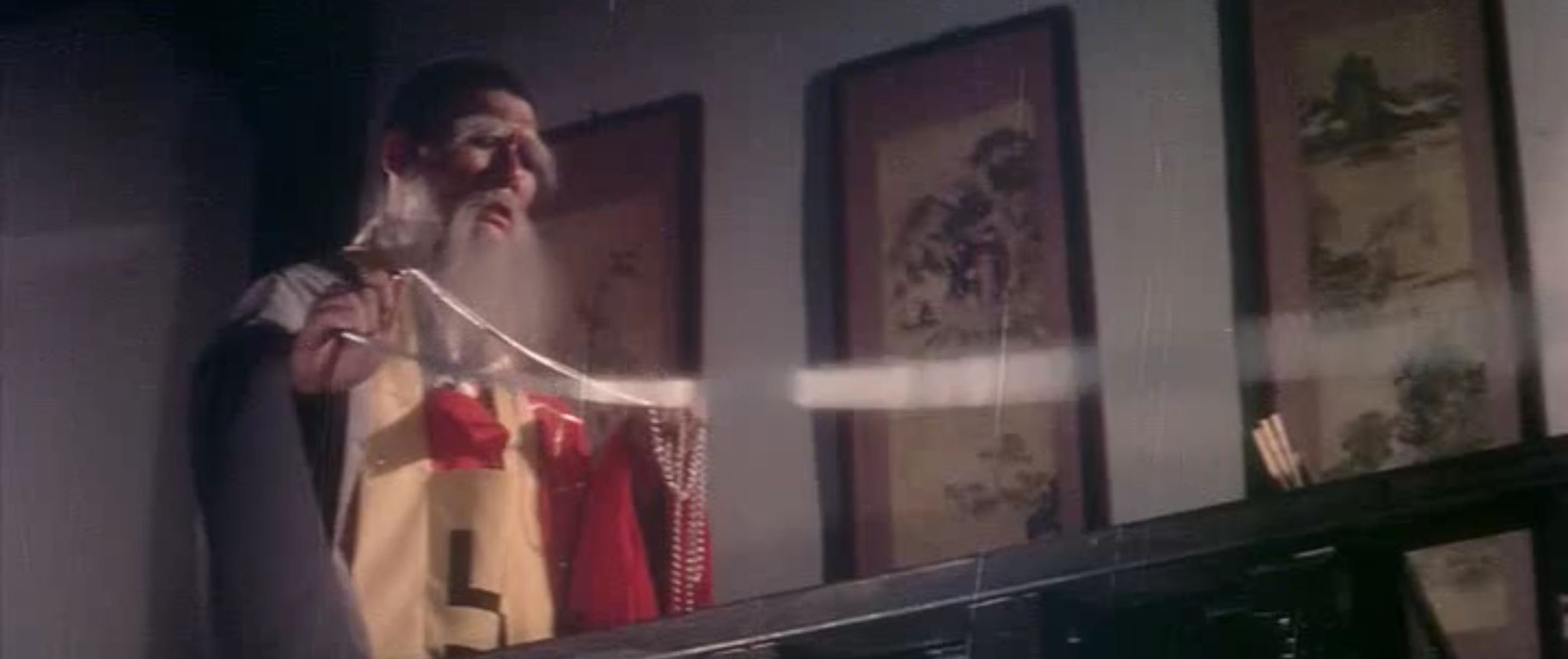 Takin’ heads, takin’ necks, what the fuck they expect? I don’t know, I don’t care, I won’t fall, I won’t stare
Takin’ heads, takin’ necks, what the fuck they expect? I don’t know, I don’t care, I won’t fall, I won’t stare
But I must confess: I am woefully undereducated here. I love watching martial arts on the screen, and would cast a suspicious eye toward anyone who doesn’t. The Matrix, Crouching Tiger, Hidden Dragon, Zhang Yimou’s Hero, the oeuvre of Jackie Chan… I love all of these, but my knowledge of their antecedents is wanting. Until Master of the Flying Guillotine, the only title under my belt was The Mystery of Chess Boxing (1979, Joseph Kuo).
 Stop tryin’ to foul me, sayin’ that we’re lousy
Stop tryin’ to foul me, sayin’ that we’re lousy
So keep that in mind, and the possibility that I’m just a soft touch, when I say that Master of the Flying Guillotine is tremendous. It’s like The Terminator, only instead of an indestructible robot, it’s an old blind guy who throws a blade-lined bag over people’s heads and decapitates them, and instead of women named Sarah Connor, it’s one-armed men. And it improves on The Terminator in one respect. Imagine if there were an asshole who says, “Hey Terminator! I know where Sarah Connor is. Follow me!” There’s three of them in this movie, and they all get what’s coming to them.
 I don’t give a flying fuck about a chump ’cause his heart only pumps Kool-Aid
I don’t give a flying fuck about a chump ’cause his heart only pumps Kool-Aid
Flying Guillotine isn’t really one for plot, which is great, because I’m not here for plot. Flying Guillotine most certainly is here for cool fights and lots of ’em, which is also fortunate, because I’m down to clown. The narrative, as it is, is a clothesline upon which to hang a series of battles, with the only consideration being how each one can logically lead to the next. The use of the martial arts tournament as an (initial) structuring element is genius, as it provides an excuse for a crapton of one-on-one duels of random combatants with various styles, that need no more context than the one provided. Most of the fights, save the climactic one, aren’t very long, but even so, each one has a memorable gimmick (Iron skin! Burning floor! Stretchy arms!) and ends in an unexpected, satisfying way.
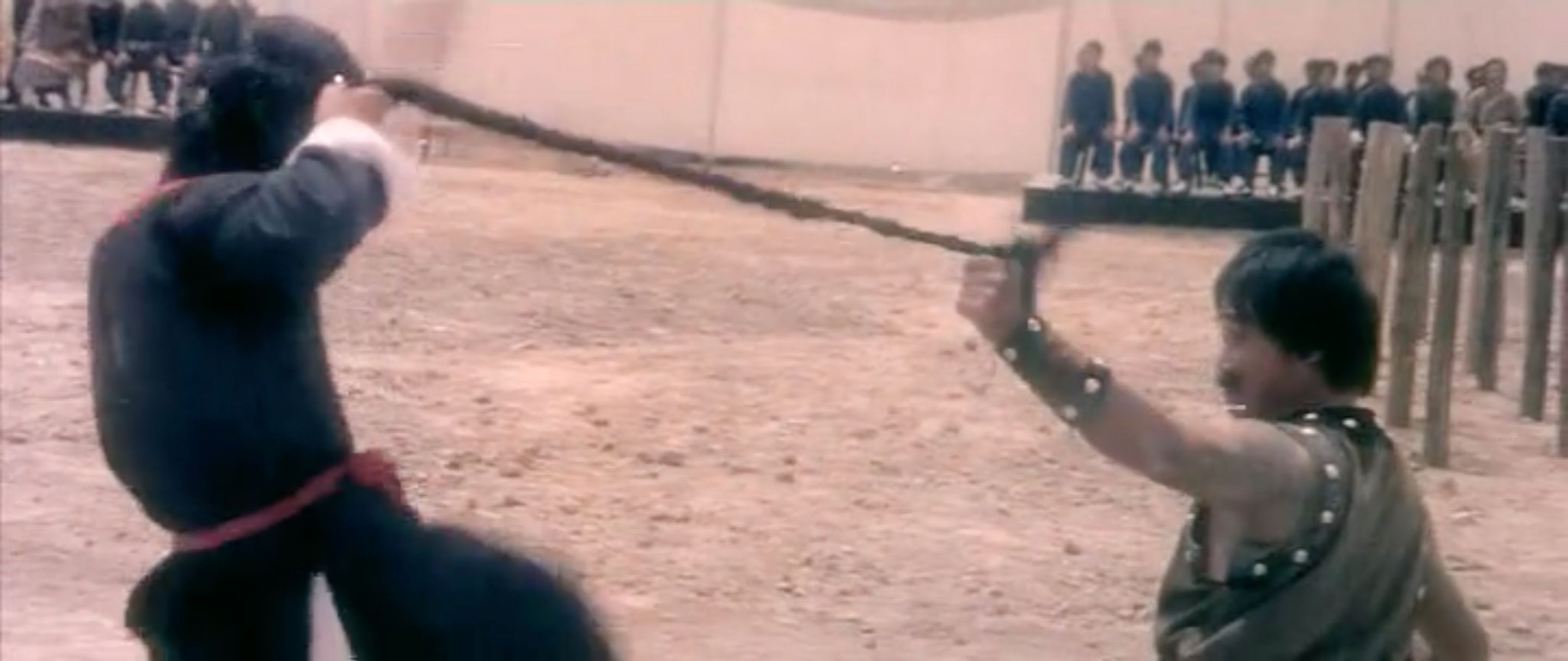 Snatch a kid by the braid, and cut his head off
Snatch a kid by the braid, and cut his head off
Again, I’m no historian of the genre, but I get the sense these movies, at the time of their release in America, were considered cheap. (The dubbing doesn’t help with that perception, and, based on what I’ve seen and Wu-Tang samples I’ve heard, appears to have been performed by the same three people.) None of the spectacle here, aside from the physical performances of the martial arts themselves, is convincing. But it doesn’t need to be. Like Phantasm, the effects have a handcrafted quality that’s endearing. The Guillotine Master’s makeup is like a Gandalf costume from Spirit Halloween. The burning floor room is created through makeup, emphatic acting, and editing in shots of fire underneath the room. The Yoga Master’s stretchy limbs are just the arm equivalent of stilts — except on close-ups, where the filmmakers take the trouble to have someone underneath the arms, out of shot, and put their real hands in place of the fake ones, completing the illusion1. That’s the thing that makes it handcrafted and wonderful regardless how “good” the effects are: it’s all illusion that never attempts to disguise its illusionary nature. Sometimes, in life, if you want to show a one-armed man stumbling about with no head, you just have an actor tuck his head and arm inside his gi and hope it works. And it does.
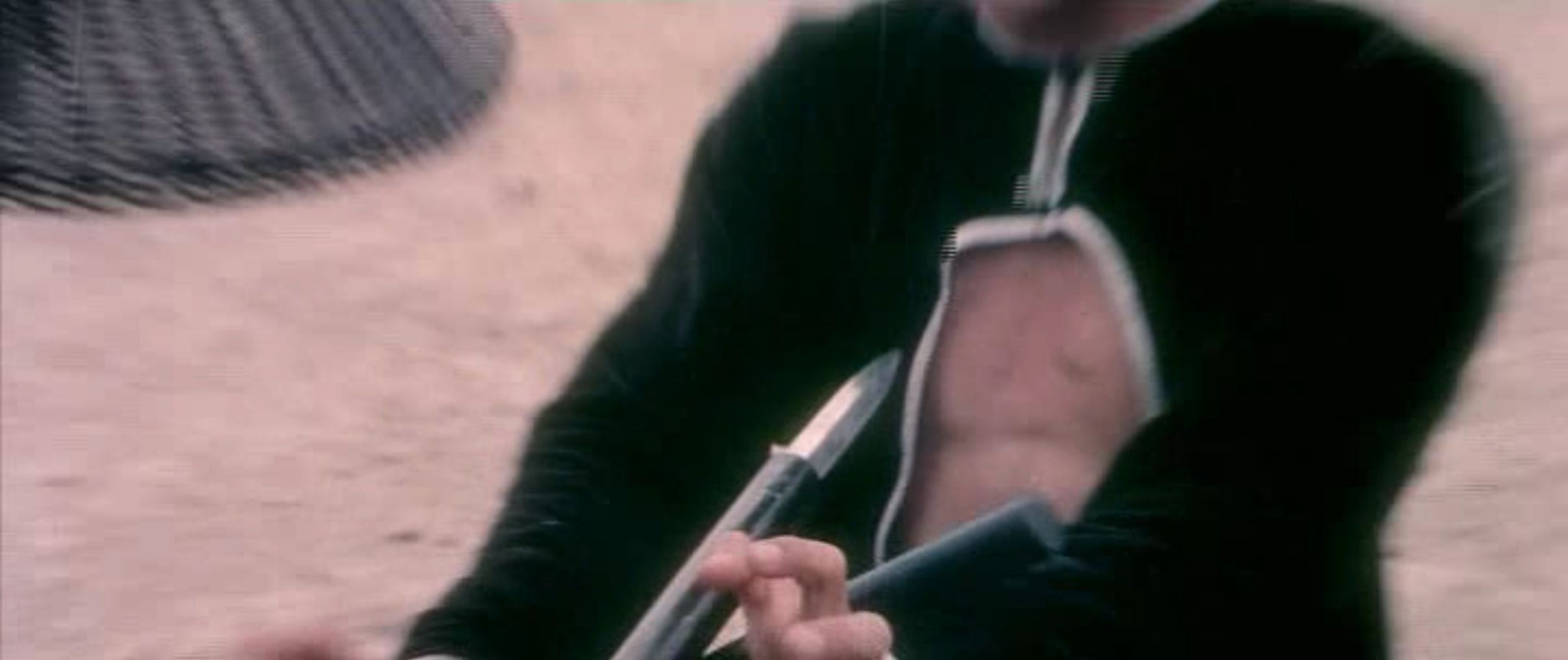 And when you’re shakin’ my right hand, I’ll stab you with the left
And when you’re shakin’ my right hand, I’ll stab you with the left
Even if one isn’t on my wavelength in regards to the special effects, a close viewing reveals that star/writer/director Jimmy Wang Yu, to put it delicately, knows what the fuck he’s doing. It’s not just that he always has the camera in the right place to capture the fisticuffs and knows when to cut to a different angle. (Yet it’s that too.) The tournament is narratively unimportant, and most of the battles feature characters we’ve never met and will never see again. Wang makes sure these parts don’t feel like filler with obvious moves like making each fighter distinctive and each combat exciting. But he also slowly ramps up the stakes, with each match getting bloodier and deadlier, ending when the Guillotine Master interrupts and takes another head. (The carnage gets to such a point that, halfway through, we get a match with the goofy Monkey Style fighter as an explicit comedic break.)
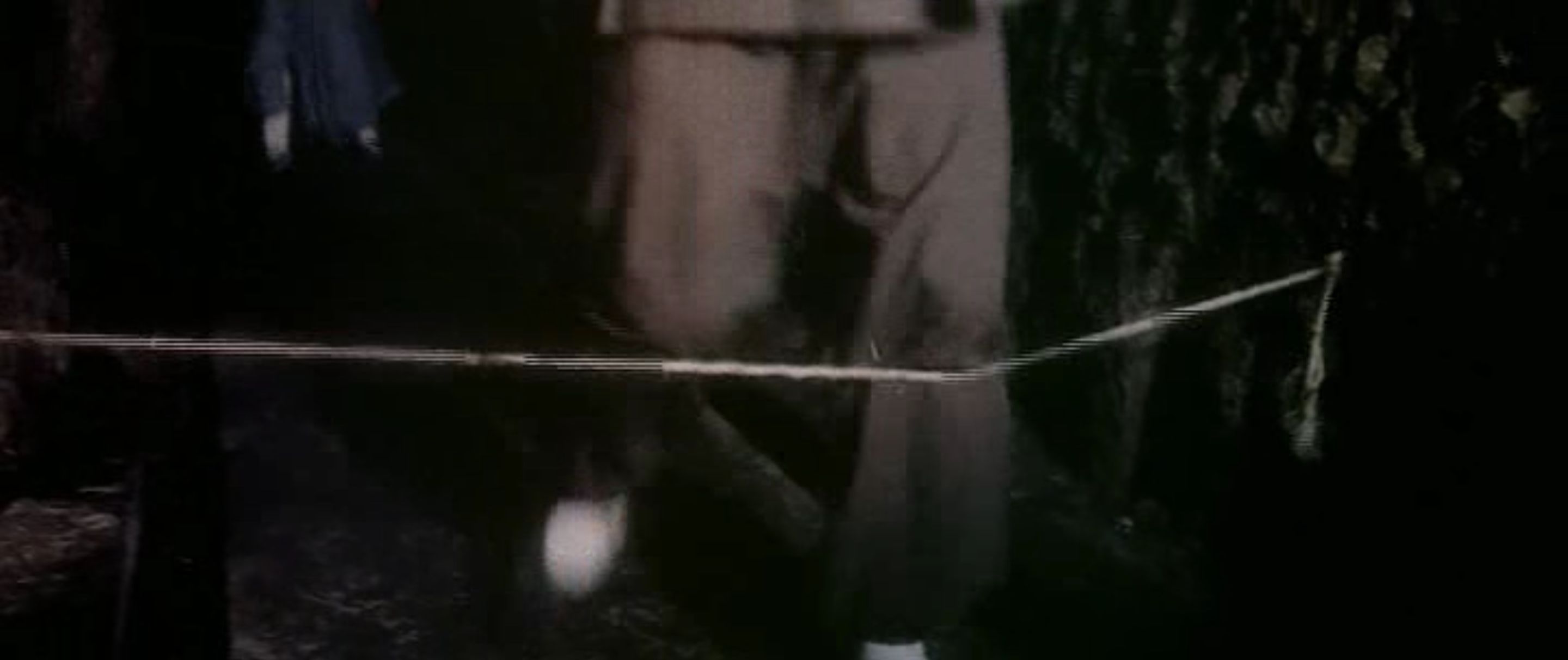 Woo woo woo! Red alert, red alert!
Woo woo woo! Red alert, red alert!
A majority of the action is comprehensible through the visuals alone, whether that’s the cat-and-mouse between the One-Armed Boxer’s quiet feet and the Guillotine Master’s heightened hearing, or how when the Thai Boxer tries to escape the burning floor room, he’s greeted at every window by a smash cut of pointed spears. In one shot, Wang focuses on the Guillotine Master, but in the background are the three foreign fighters, grouped together. The four aren’t really allied at that point, but the shot foreshadows it by slotting all the villains together. These are comic book aesthetics in the best possible sense, and nearly every shot is built from them. (The exaggerated sound effects when anyone takes a swing — which, speaking of handcrafted, I think were created by blowing into a mic — are like the auditory equivalent of comic book onomatopoeia.)
 Once I go berserk, mad brothers got hurt
Once I go berserk, mad brothers got hurt
Movies based on actual comics could learn a lot from Jimmy Wang Yu.
How many stars out of five? Four and a half. This is a good time to remind readers that the stars are based more on how much I enjoyed the film than anything else. From a jaded 2022 perspective, the film could be seen as shoddy — I imagine the Yogi’s extending arms would be greeted by derisive laughter by today’s audiences. But to hell with those people, especially when the film has this much energy and verve.
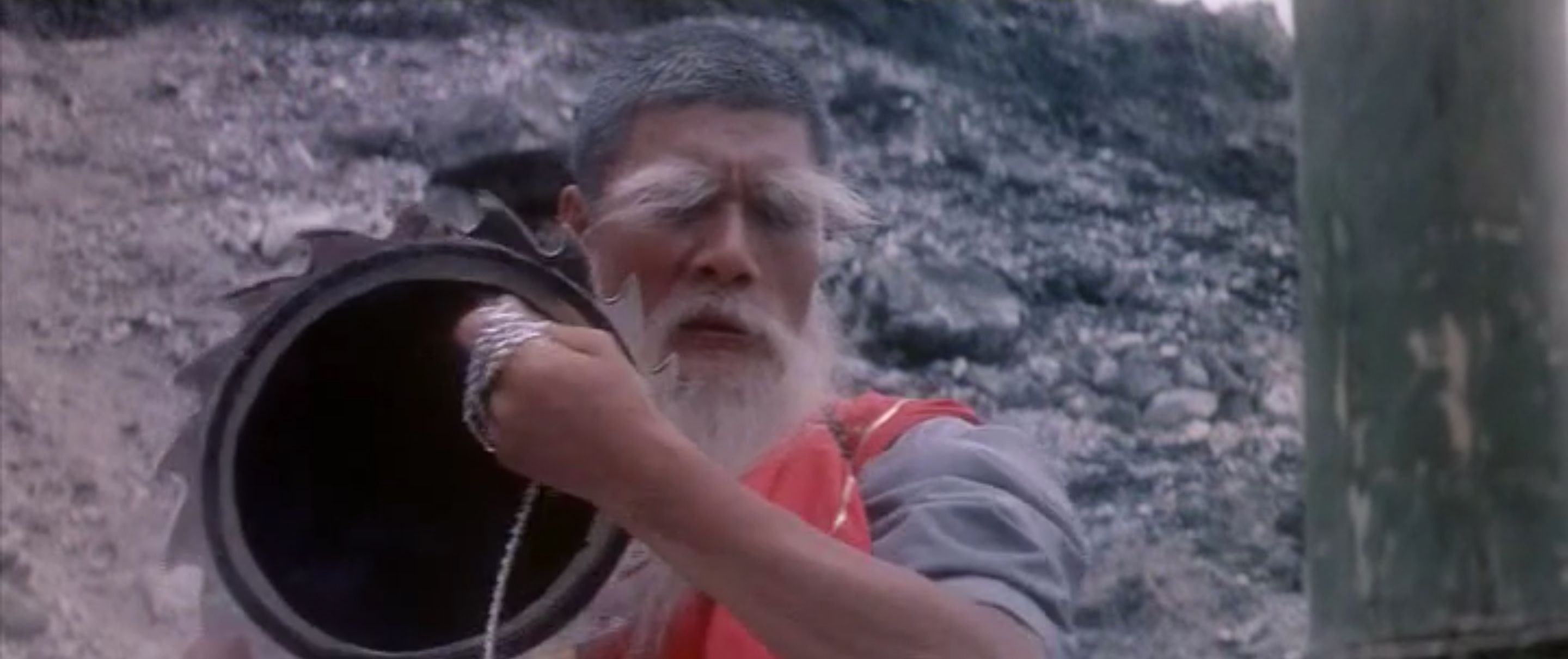 Watch ’em scream when I hop on the scene — they fear the return of the fatal flying guillotine
Watch ’em scream when I hop on the scene — they fear the return of the fatal flying guillotine
Where can I stream it? As of this writing2, Master of the Flying Guillotine can be streamed from Tubi, Pluto and Fandor. You can rent or buy it from Alamo. Please note that the version streaming on Tubi is dubbed, but has several scenes that are not dubbed and unsubtitled. This will not affect your overall enjoyment of the film — it’s pretty easy to understand the plot from what is dubbed — but if you get a little frustrated when you can’t understand the language in a movie, you may want to seek out the “Two-Disc Anniversary Edition” dvd, which I believe has complete subtitles throughout. It’s possible the versions from Pluto, Fandor and Alamo are also complete; I haven’t checked.
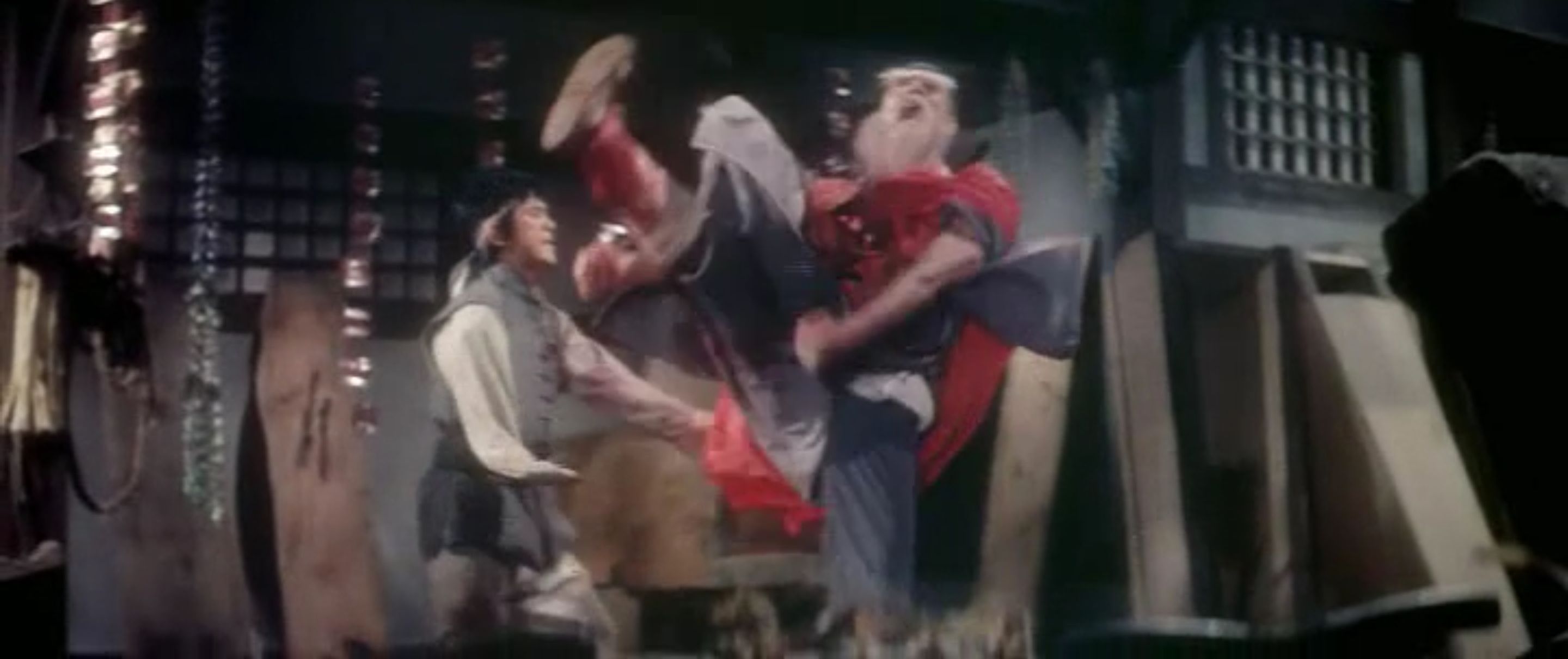 Isn’t that powerful?
Isn’t that powerful?
What can we take from it? You’re probably expecting a writeup on the Guillotine Master himself, Fung Sheng Wu Chi. However, I wanted to tackle this movie from a slightly different rpg angle.
 NOTES ON USING MARTIAL ARTS IN THE CYPHER SYSTEM
NOTES ON USING MARTIAL ARTS IN THE CYPHER SYSTEM
Background
As I noted earlier, I’m not an expert on martial arts, whether that’s in fiction or real life. There are no doubt a number of subtleties to the genre that escape me and thus escape any ideas I propose below. Ideally, in the future, I’ll get more films under my belt, as well as some reading, and maybe my thinking will be more informed. Until then, though, I’m going to focus on how these battles feel and how to capture that feeling.
A couple things. First, if you have martial arts in your Cypher System game, and you’re not experiencing any problems or difficulties, great! Keep doing what you’re doing. Second, if you’re intent on playing a martial arts/kung-fu/wuxia role-playing game, there’s several on the market that are designed for just that experience. The most famous is probably Feng Shui. However, that game is premised on a time war between four different periods in Hong Kong history (69 A.D., 1850, 1996, and 2056), so it’s not what one would call traditional. For that, titles such as Hearts of Wulin, Legends of the Wulin, Tianxia: Blood, Silk & Jade and Righteous Blood, Ruthless Blades might be more your speed. (You can get a brief rundown on each of these four in an article by Coleman Gailloreto over at Polygon.)
If you’re still intent on using the Cypher System and feel like it’s missing something, read on.
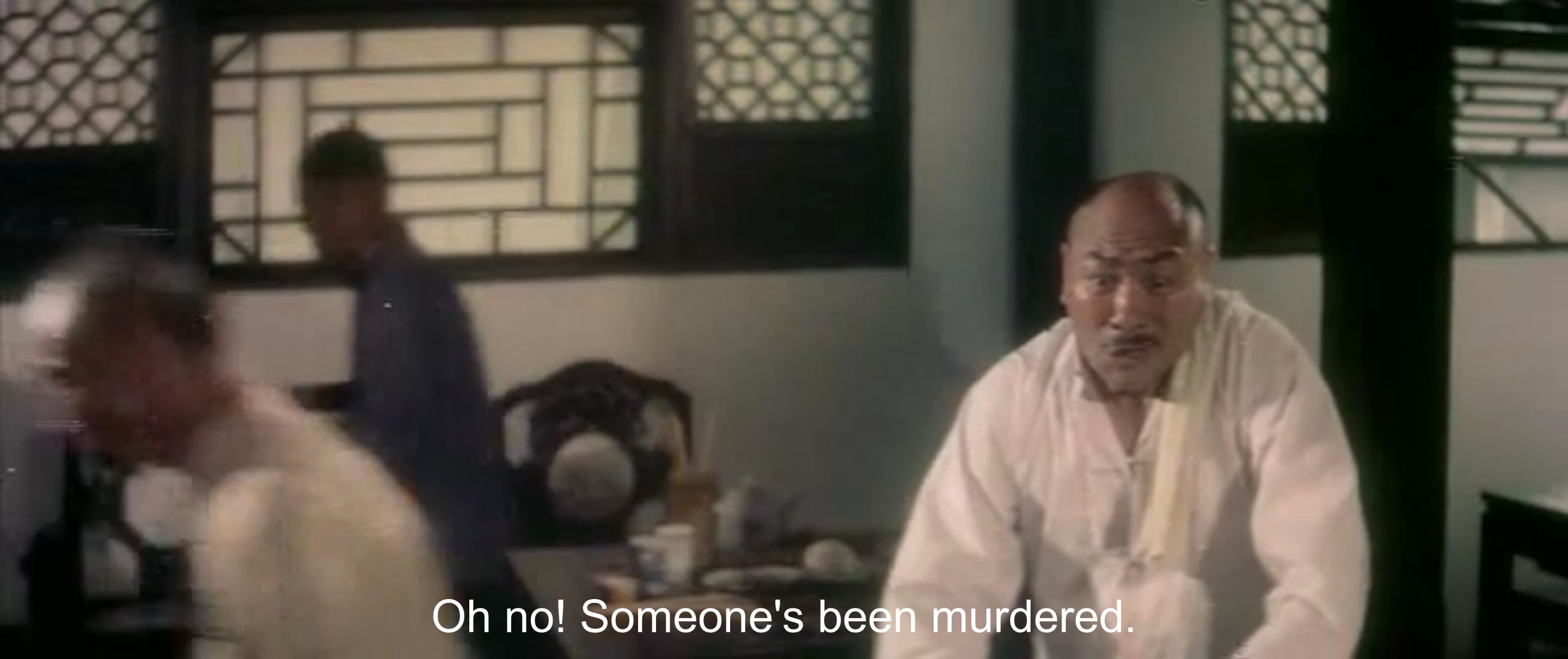 Problems
Problems
The main problem with modeling or expressing cinematic martial arts in the Cypher System (and most rpgs, really) is that the game is built on “I go, you go” mechanics. For each player’s turn, they can take one action, and if that is an attack, they roll to see if they hit. If they go, they inflict damage on their opponent. Then it’s the opponent’s turn, and this goes back and forth until someone has taken enough damage to remove them from combat. This is a perfectly fine system, and it’s great in terms of clarity — games since time immemorial have installed in us the idea of a “turn” and this is just an extension of that.
However, a glance at any given cinematic martial arts scene demonstrates that “I go, you go” doesn’t quite capture what ’s on the screen very well. In a cinematic martial arts scene, the combatants are constantly exchanging blows, blocking some, dodging others, putting opponents into holds and having those holds reversed. There’s a rhythmic, dance-like quality to martial arts fights, coupled with a game-like strategy3, and this isn’t captured by most rpg systems.
Now, there’s always the solution of “reskinning” the action. That is, there is rarely anything in an rpg rulebook that says one attack action performed by a character represents, in the fiction of the game, one attack. One of the great things about rpgs is that the fiction, being created mostly through language, can be as fluid and malleable as language. So there is nothing stopping a GM4 from narrating an attack like, say, “You and your opponent exchange blows, but then when he thrusts a fist at your face, you grab his wrist, turn him around 180 degrees, and give him a swift kick in the back. He stumbles and falls, but then quickly hops up to face you, his eyes narrowing with determination.”
There’s nothing wrong with that, and it probably works for most tables. But is there a better way? Or (I mean, let’s not toot my own horn here), if not better, a way that more accurately represents the feeling of what we see on the screen? Maybe! I don’t really have time at this juncture to go as deep as this topic requires, but I can sketch out some ideas for paths forward. And since the ultimate goal here is some kind of Against the ’70s book, which would presumably have a section on martial arts, there’s an excellent chance I’ll return to the topic at some point.
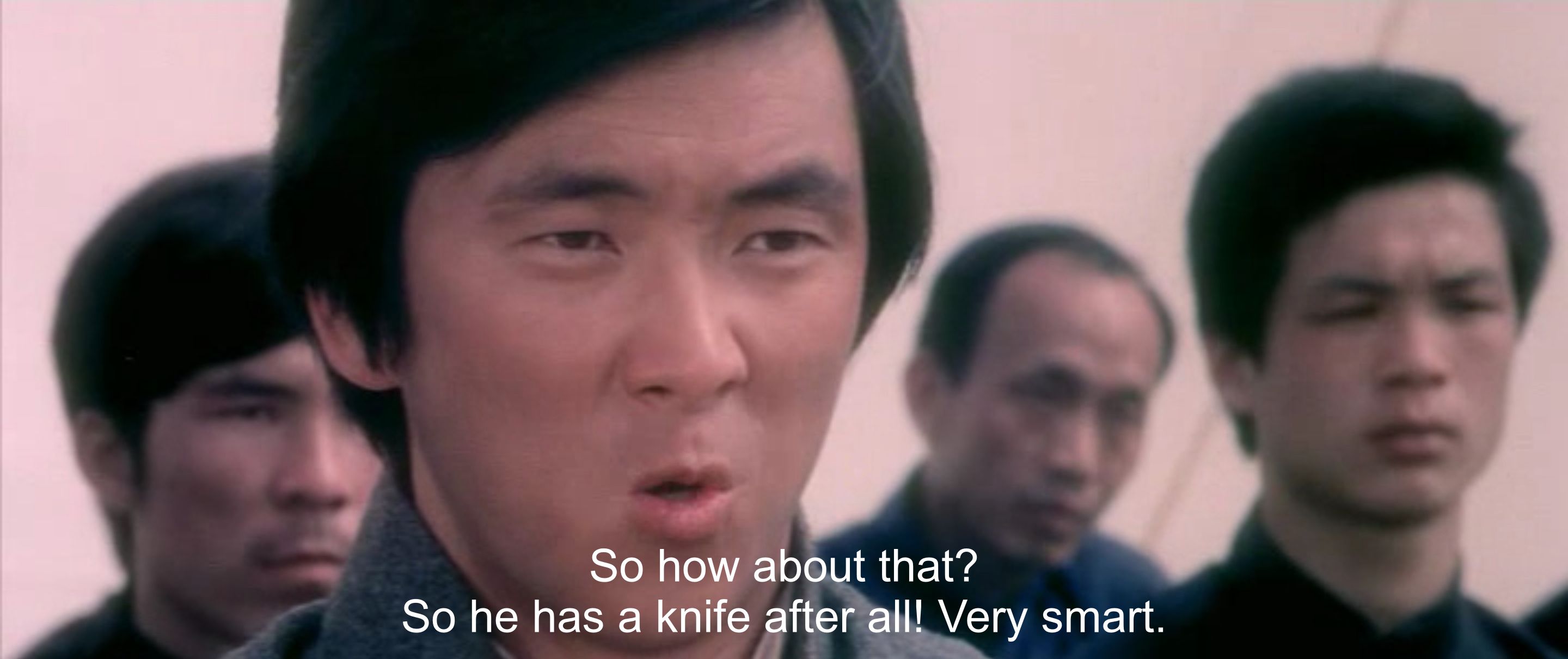 Ideas Towards Solutions
Ideas Towards Solutions
In the Cortex rpg, a martial arts battle would be modeled with a player taking a number of dice, based on their character’s abilities, and rolling a total, with the opponent either taking the hit, or rolling their own dice to beat the total. If they did beat it, the first player could roll again and keep “raising the stakes,” until someone finally lost and took damage. This seems to me to be an ideal method for modeling a cinematic martial arts battle, one that honors and abstractly simulates the back and forth and moment-to-moment strategy of the fight. Can we take something from this?
The Cypher System is unlike a lot of traditional rpgs, in that the player rolls to hit an opponent, and rolls to avoid being hit by an opponent. The GM never rolls. What’s interesting and usable is that, more often than not, the target number for both of these actions is the same. One idea we can use to model the cinematic martial arts feeling is to combine this mechanic into one roll: the player rolls against a target number, and if they beat it, they hit, and if they miss, they get hit. Cinematic martial arts battles often feel like things are happening simultaneously, and this covers that. Furthermore, in the Cypher System, a roll of 17+ usually confers some kind of benefit to the PC, while a roll of 1 usually indicates some misfortune. It would be simple to color those results as leg sweeps, arm locks, or powerful blows that send opponents flying.
What can we do to address the strategic aspects? First, the Cypher System, as written, gives us tools towards this. The target number should, as usual, be altered by skills, assets, and Effort. Skills would normally modify the target number for every roll, while assets are one-time use, and Effort requires the sacrifice of precious Pool points, that double as hit points. The player strategically using assets, and knowing when to use Effort in order to land a knockout blow could mimic this quality of cinematic martial arts battles.
This is a good base to build from, but could use some expansion. The next step would be to come up with abilities that feed into this concept. For example, one ability could be simply inflicting extra damage but only when engaged in a martial arts duel. Or perhaps one ability is a risky maneuver, one that does extra damage if the attack roll is a success, but does extra damage to the attack if the roll is a failure. Along those same lines, maybe there’s an ability that’s about risking it all for momentum in the duel — if the attack roll is a success, the next attack is eased, but if it fails, the next one is hindered. Extending this further, there could be an ability for the iconic Street Fighter hadouken energy blast, one that can only be used in a duel. (An idea for future development: martial arts styles — Eagle’s Claw, Monkey Style, Snake Fist, etc. — as Foci, each with a list of specific and unique abilities to those styles.)
Finally, the use of cyphers (one-use powers) is key here. This is an opportunity to reskin cyphers as elements of the environment, for use in Jackie Chan-style hijinks. An armor-type cypher that blocks damage? That’s a small table the player character holds up and is demolished by their opponent. Something that causes a fighter to fall down prone? Rug pull. Some kind of extended movement? A rope that happens to be hanging from the ceiling, or the character hops up a stack of crates that fall apart after each step, that leads to a rafter twenty feet above the fray.
And that’s all I have for the game section of today’s post.
.
.
.
.
Okay, fine, here’s the Master of the Flying Guillotine.
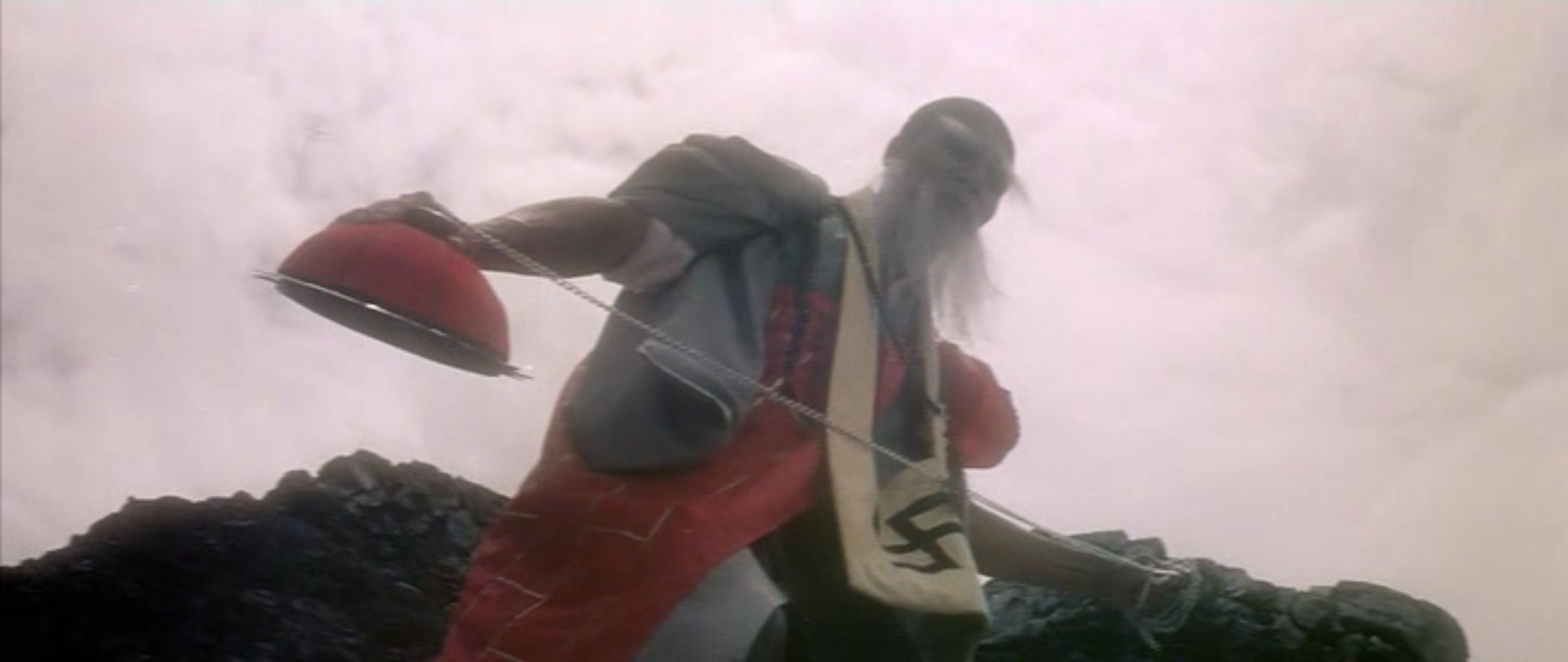 FUNG SHENG WU CHI, MASTER OF THE FLYING GUILLOTINE
FUNG SHENG WU CHI, MASTER OF THE FLYING GUILLOTINE
Level: 8 (24+ on a d20 to hit, 24+ on a d20 to avoid being hit) or 5 when using the explosive pebbles.
Description: Fung Sheng Wu Chi is an old man, approximately in his early 70s, with white hair and a long white mustache. He is blind. He wears grey and red robes.
The flying guillotine is a small, red, half-dome-shaped object that is lined with incredibly sharp blades, and attached to a chain. When used accurately, the flying guillotine lands over the head of a target, dropping a net around it (looking a bit like a beekeeper’s mask) and with the pull of the chain, slices the target’s head clean off.
Motive: (Mid-career) To assassinate all those who threaten the Emperor. (Late career) To avenge his slain disciples.
Health: 24
Damage Inflicted: 10 or 6 or 5 (see below)
Movement: Short, but can also jump vertically a Short distance
Modifications: Despite being blind, Fung Sheng Wu Chi can fight better than nearly any sighted person. However, this means that he can be avoided or even defeated through judicious use of silence. PCs with stealthy skills may be allowed to ease the difficulty of attacking and avoiding Fung Sheng Wu Chi. Allow PCs fighting Fung Sheng Wu Chi to come up with strategies that create assets that can also be used to ease the difficulty: throwing rocks to distract him, creating noise to disorient him, or quiet traps that rely on sight to avoid.
Combat: In combat, Fung Sheng Wu Chi’s first move will be to attack with the flying guillotine. The flying guillotine has a range of Long, and if it hits, it does 10 damage. If this is enough to reduce a target’s health to 0 or a PC to 0 in all three Pools, then the target has been decapitated. If it is not enough, then the guillotine has slashed the target instead. If his flying guillotine can be destroyed or otherwise neutralized, then Fung Sheng Wu Chi will inflict 6 damage with his blows.
Fung Sheng Wu Chi also has access to a number of small pebble-sized explosives that he can throw up to Long range. He is only level 5 when using these (15+ on a d20 to avoid being hit) and they only do 5 damage. However, they affect all targets in an immediate radius, and can set flammable objects on fire.
Targeting the flying guillotine: A combatant could choose to target the flying guillotine instead of Fung Sheng Wu Chi in order to take his most dangerous weapon away from him. To strike the flying guillotine, a combatant must have a weapon that could feasibly harm it, and while it is wielded by Fung Sheng Wu Chi, it is a level 10 task. The flying guillotine has 10 health, and if it is reduced to 0, it is irrevocably broken.
Interaction: Fung Sheng Wu Chi has no time for small talk. To him, you are either marked for death or just part of the furniture of the world.
Use: Fung Sheng Wu Chi is coming, hide your head, girl. That’s it. That’s the adventure hook.
Loot: The flying guillotine itself could be loot, although if a PC wished to arm themselves with it, they would have to train for a long time in order to properly use it. Anyone just picking it up and flinging it and hoping for the best will have to make a level 7 Speed task to hit with it and a level 7 Speed task to catch it without hurting themselves (7 damage).
GM Intrusion: An attack from the flying guillotine has slashed the PC, spilling blood on the floor and giving Fung Sheng Wu Chi a way of tracking them.
NEXT TIME, ON AGAINST THE ’70S: 11 Harrowhouse (1974, Aram Avakian)
One great thing that helps sell the Dhalsim-esque arms is that Wang gets a performance from actor Yung-Sheng Wang that cements their impossible reality. Not sure how to explain this other than direct you to this article about the filming of An American Werewolf in London (1981, John Landis) and check out the third photo.↩︎
5/15/22↩︎
You could call it chess… boxing.↩︎
Or player!↩︎
 May Poll (for June)
May Poll (for June)
 AT70 Extra: Cypher System “Bundle of Holding” Now Available Until June 6
AT70 Extra: Cypher System “Bundle of Holding” Now Available Until June 6